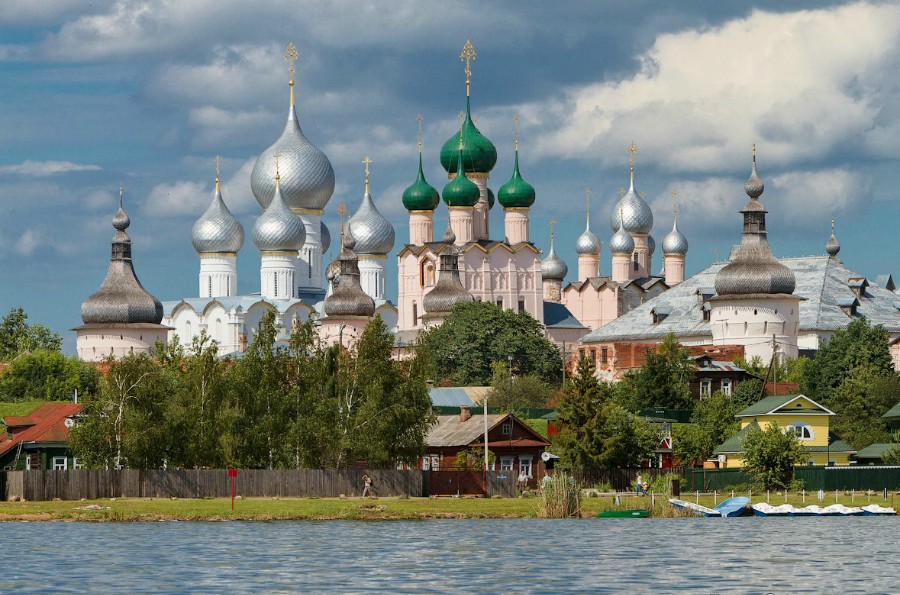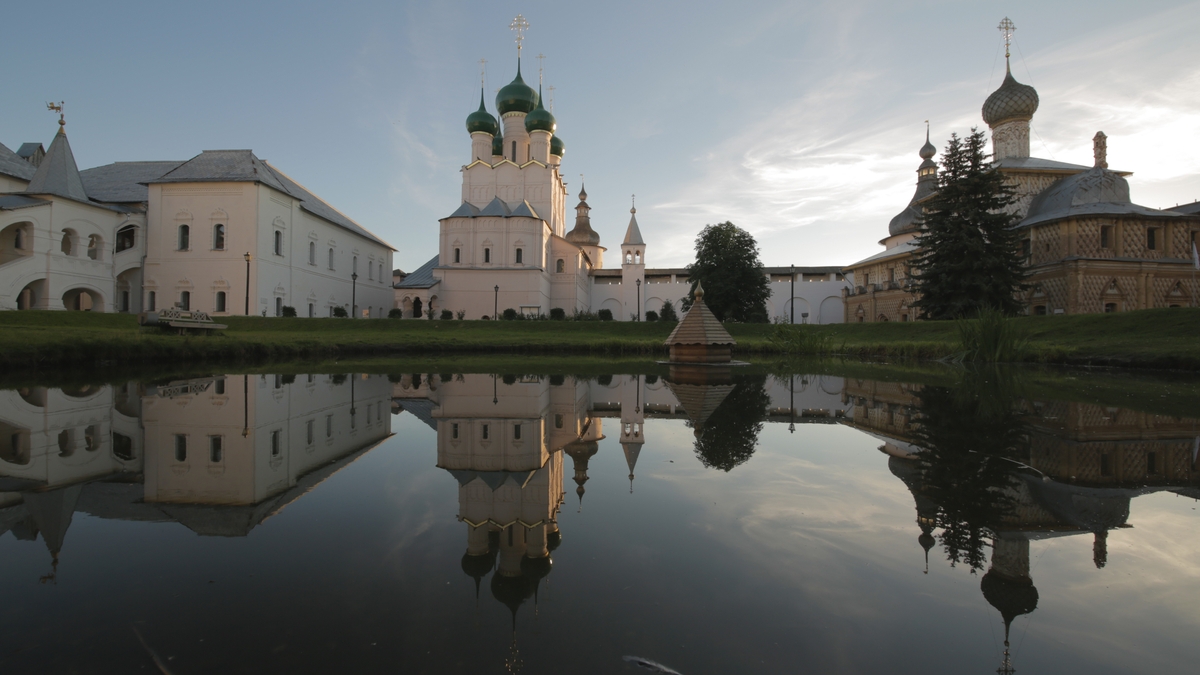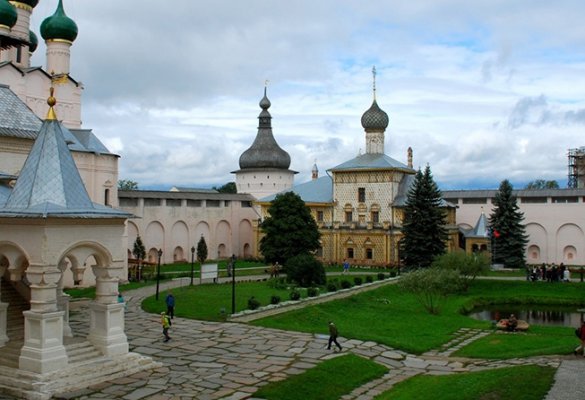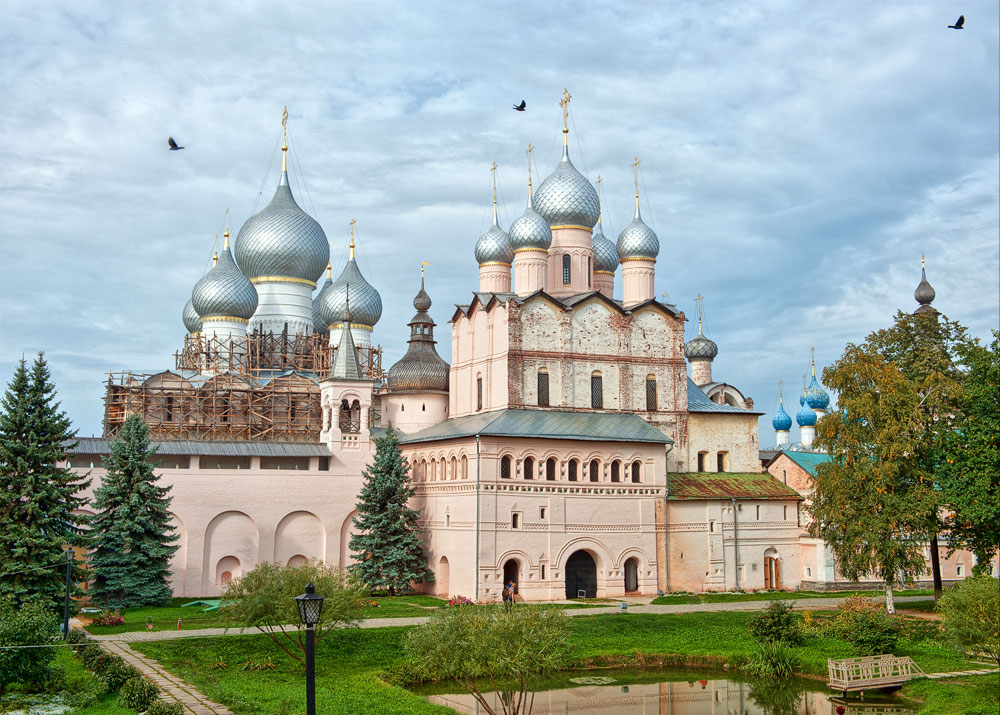Rostov is a town in Yaroslavl Oblast, Russia, one of the oldest in the country and a tourist center of the Golden Ring. It is located on the shores of Lake Nero, 202 kilometers (126 mi) northeast of Moscow. Population: 31,792 (2010 Census); 34,141 (2002 Census); 35,707 (1989 Census).
While the official name of the town is Rostov, it is also known to Russians as Rostov Veliky, i. e. Rostov the Great. This name is used to distinguish it from Rostov-on-Don, which is now a much larger city. Rostov Yaroslavsky is the official name of its railway station (due to its position in Yaroslavl Oblast).
Rostov was preceded by Sarskoye Gorodishche, which some scholars interpret as the capital of the Merya tribe, while others believe it was an important Viking trade enclave and fortress guarding the Volga trade route. First mentioned in the year 862 as an already important settlement, by the 13th century Rostov became the capital city of one of the most prominent Russian principalities. It was incorporated into Muscovy in 1474.
Even after it lost its independence, Rostov was still an ecclesiastic center of utmost importance (from 988 it was the see of one of the first Russian bishoprics).In the 14th Century, the bishops of Rostov became archbishops, and late in the 16th century, metropolitans. One of those metropolitans, Iona (Jonah) Sysoyevich (ca. 1607-1690), commissioned the town's main landmark: the kremlin that many regard as the finest outside of Moscow.
Ravaged by the Mongols in the 13th and 14th centuries (last sack by Edigu in 1408) and the Poles in 1608, Rostov became a medium-sized town. The metropolitan see was transferred to Yaroslavl late in the 18th century.
Apart from its history, Rostov is renowned for its enamels.
The central square of Rostov is occupied by the Assumption Cathedral. It is unknown when the present building was erected, the mid-16th century being the most likely date. Lower parts of the cathedral walls are dated to the 12th century. The ponderous bell-tower was constructed mostly in the 17th century. Its bells are among the largest and most famous in Russia - each has its own name. The largest bell, cast in 1688, weighs 32,000 kilograms (71,000 lb). It is named Sysoy to honor the city's founding father.
An area situated between the cathedral square and the lake was chosen by Iona Sysoevich as a place for his fairy-tale residence. All the construction works were carried out between 1667 and 1694. Major buildings include the ornate Savior Church-na-Senyakh (1675), the sombre Church of St. Gregory (1670), and the barbican churches of St. John the Apostle (1683) and of the Resurrection of Christ (1670). The residence, often erroneously called kremlin, also includes eleven ornate tower bells, numerous palaces, several small belfries, and the diminutive baroque Church of Our Lady of Smolensk (1693). All the churches are elaborately painted and decorated.
The cathedral and four tall kremlin churches with their silver "blind" domes were imitated throughout the city. This is particularly evident in the Savior-on-the-Market church and the cathedral church of the Nativity convent, both dating from the 17th century and situated near the kremlin walls. The oldest church within the town center was consecrated to St. Isidore the Blessed in 1565. They say that Ivan the Terrible had the architect executed, because his church was so much smaller than its predecessor.
The kremlin is flanked by two monasteries, both facing the Lake Nero. To the right from the kremlin stands the Abraham monastery, founded in the 11th century and one of the oldest in Russia. Its cathedral, commissioned by Ivan the Terrible in 1553 to commemorate the conquest of Kazan, inspired numerous churches in the region, particularly in Yaroslavl.
Spaso-Yakovlevsky Monastery, situated to the left from the Kremlin on the town's outskirts, has been venerated as the shrine of St. Dmitry of Rostov. Most of the monastery structures were built in the late 18th and early 19th centuries in the fine neoclassical style. There are also two 17th-century churches: the Conception of St. Anna, and the Transfiguration of Our Savior. Unlike most other churches in the town, the monastery belongs to the Russian Orthodoxy and houses a theological seminary.













